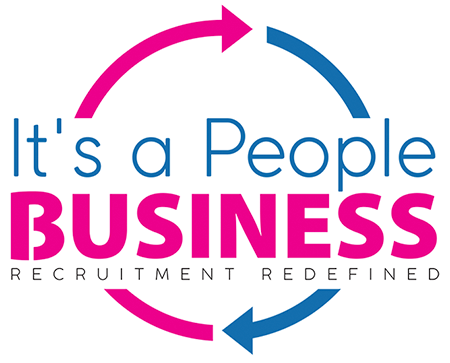
As businesses strive to reach their recruiting goals, the ability to balance cost and quality within the recruitment process is becoming increasingly important. A successful recruitment strategy should not only aim to save money but also ensure that quality standards are consistently met. However, achieving this balance can be challenging, especially with the rise of digital hiring platforms, which can often be both expensive and unreliable. In this blog post, we will look at some of the strategies businesses can use to ensure that their recruitment process is cost-effective and efficient, while also achieving the desired quality standards. We will look at the different types of recruitment methods available, from traditional methods to more innovative approaches, and discuss the advantages and disadvantages of each. We will also explore how businesses can use technology to streamline their recruitment process and reduce their costs. Finally, we will examine the value of taking a proactive approach to managing recruitment costs, as well as strategies for monitoring and optimising a recruitment budget.
1. Analysing current recruitment practices
1. Analysing current recruitment practices

One of the most important steps when striving for a cost vs quality balance in recruitment is to analyse current practices. Evaluating the efficacy of existing recruitment processes can help identify areas of improvement and pinpoint where savings can be made. This can be done through conducting surveys, interviews, and focus groups with stakeholders, as well as examining relevant data. This can provide a better understanding of recruitment costs, candidate sources, hiring managers’ preferences, and the general accuracy and reliability of the recruitment process. Doing so helps to ensure that recruitment efforts are cost-effective, while still bringing in top talent.
2. Utilising digital tools to reduce cost
2. Utilising digital tools to reduce cost

In order to effectively balance cost and quality in recruitment, businesses should consider utilising digital tools. Many companies are now turning to digital tools to reduce the cost of the recruitment process, such as using a job board for posting open positions, using video conferencing for preliminary interviews, and using applicant tracking software to streamline the hiring process. Utilising digital tools in the recruitment process can significantly reduce time and cost, while still ensuring that quality candidates are hired. With a variety of digital tools at their disposal, businesses can streamline the recruitment process, allowing them to focus on finding the best talent instead of getting bogged down with administrative tasks. Digital tools can be used to post job listings, source and track candidates, manage applications, and even automate background checks. Furthermore, they can be used to help with candidate assessment, allowing recruiters to quickly and easily evaluate and compare the skills, experience, and qualifications of each applicant. By leveraging digital tools, businesses can speed up their recruitment process, increase efficiency, and save money in the long run
3. Utilising temporary or part-time positions
3. Utilising temporary or part-time positions

One way for businesses to effectively balance cost and quality in recruitment is to utilize temporary or Part-time employment. This strategy can help businesses meet short-term needs, such as an increase in demand or a special project, without the cost of a full-time hire. Not only is this a cost-effective alternative, but businesses also benefit from having access to high-quality talent. Temporary staff are particularly beneficial for businesses with limited budgets that need to control their costs. Furthermore, businesses can benefit from the flexibility of hiring temporary staff, as they are able to scale up or down their workforce according to the changing needs of their business. Temporary staffing also helps businesses keep up with the ever-changing demands of the industry with minimal long-term financial commitment. This approach can bring a high return on investment by allowing companies to be productive and cost-efficient at the same time. This strategy can be especially useful when the skills required for a full-time hire are not necessary for the duration of the project.
4. Developing partnerships with local universities
4. Developing partnerships with local universities

Achieving the balance between cost and quality in recruitment is an important factor for any business. One key approach to making this balance successful is to develop strong Partnerships with local universities. These partnerships can provide businesses with access to the latest talent in their field, whilst ensuring cost-effectiveness. By leveraging the deep industry knowledge of university faculty and alumni, businesses can ensure that they are hiring qualified candidates that have the necessary skills to contribute to the organisation’s success. These partnerships can be beneficial in the long-term, allowing businesses to build a larger and more diverse pool of potential candidates. Furthermore, universities can often provide a wealth of resources that a business can take advantage of, such as career fairs, alumni networks, and job postings. These resources can help to ensure that businesses are able to source the right candidates at the right price.
5. Staying up-to-date with industry best practices
5. Staying up-to-date with industry best practices
It is important to ensure that an organisation's recruitment process strikes an effective cost vs quality balance. Staying up-to-date with industry best practices can help organisations strike this balance effectively. Up-to-date practices include a focus on automation, leveraging technology to make the recruitment process more efficient, and data-driven decision-making. Automation reduces costs associated with manual labour while allowing recruiters to focus on more value-added activities such as developing meaningful relationships with candidates and advocating for diversity and inclusion. Leveraging technology can help to streamline the recruitment process and quickly identify the best candidates. Lastly, leveraging data-driven decision-making can help to ensure that recruitment decisions are based on evidence rather than intuition.
In conclusion, it is essential for employers to consider the cost and quality of recruitment when selecting and employing new staff. Cost-effective strategies such as utilizing employee referrals and online advertising can help employers to access the right talent, while recruitment agencies can help to source and screen suitable candidates, balancing cost and quality. Ultimately, these strategies can help employers to identify and recruit the right people who are best suited to meet their business needs.
If employers wish to find the best and most cost-effective solutions for their recruitment needs, they should consider ‘It’s a People.Business’. With their extensive experience in the recruitment field, they can help employers to find the right people at the right cost, ensuring a successful recruitment experience.